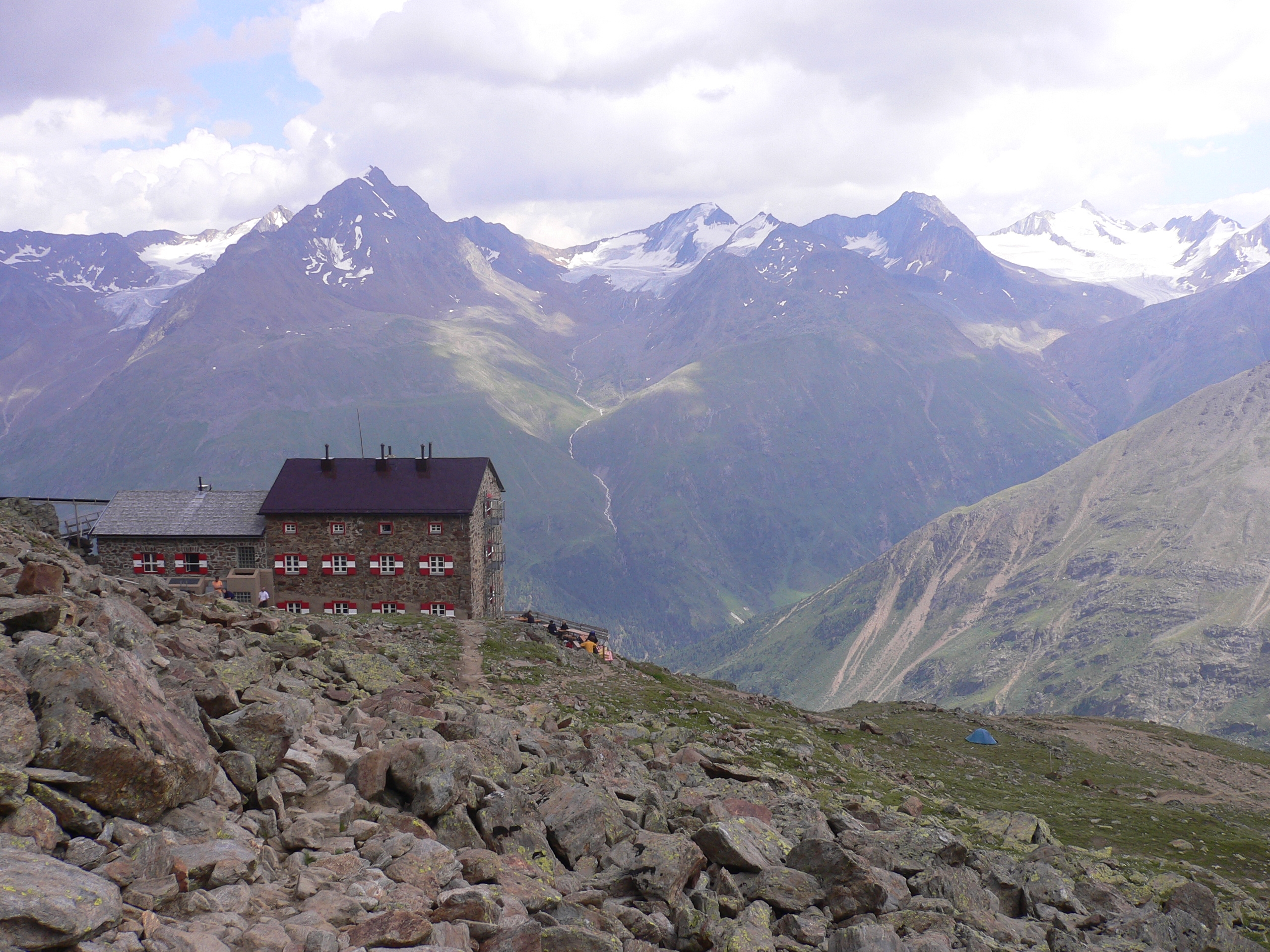|
Mount Hiuchi
is one of the 100 Famous Japanese Mountains, reaching the height of . It is situated in Japan's Kubiki Mountains in Niigata Prefecture. It was specified for Jōshin'etsu Kōgen National Park on July 10, 1956, but since has been absorbed by the Togakushi-Renzan National Park, which encompasses Mount Myōkō (妙高山 ''Myōkō-san'') and Mount Niigata-Yake (新潟焼山 ''Niigata-Yakeyama''). Outline The surrounding area is deep snow country. This mountain is famous for the many alpine plants found above the tree line. The Siberian Dwarf Pine can be seen here, together with fauna such as the Rock Ptarmigan. There are several climbing routes to the top of the mountain, principally from Sasagemine after the annual spring re-opening of the road. The Kōya-ike pond along the route is noted for its autumn foliage. Accommodation in the alpine environment are the Kōya mountain hut with campground, and the Kurosawa-ike hut also with campground. Both are located is to the southeast o ... [...More Info...] [...Related Items...] OR: [Wikipedia] [Google] [Baidu] |
Geospatial Information Authority Of Japan
The , or GSI, is the national institution responsible for surveying and mapping the national land of Japan. The former name of the organization from 1949 until March 2010 was Geographical Survey Institute; despite the rename, it retains the same initials. It is an extraordinary organ of the Ministry of Land, Infrastructure, Transport and Tourism. Its main offices are situated in Tsukuba City of Ibaraki Prefecture. It also runs a museum, situated in Tsukuba, the Science Museum of Map and Survey. Earthquake Precursor Prediction Research Stationary MT monitoring systems have been installed in Japan since April 1996, providing a continuous recording of MT signals at the Mizusawa Geodetic Observatory and the Esashi Station of the GSI. These stations measure fluctuations in the earth's electromagnetic field that correspond with seismic activity. The raw geophysical time-series data from these monitoring stations is freely available to the scientific community, enabling further study ... [...More Info...] [...Related Items...] OR: [Wikipedia] [Google] [Baidu] |
Snow Country (Japan)
refers to areas in Japan characterized by heavy, long-lasting snowfalls. The rather poetic can refer to any place with heavy or deep snows and is generally understood as a reference to the Sea of Japan side of Honshū (Japan's main island) and the area encompassed by the Japanese Alps, a series of mountain ranges that make up the island's backbone. In its broadest meaning, ''snow country'' means the belt along the Sea of Japan from Yamaguchi (in particular, Shimane) in the south to Honshū's northern tip, as well as Sado Island and Hokkaidō. More narrowly defined, it is used to indicate the area from Fukui to Akita Prefecture, but it is most closely associated with part of Fukui and all of Toyama and Niigata Prefectures. "Heavy Snowfall Zones" refers to places where snowfall and snow cover are severe enough to be a hindrance to the livelihood of inhabitants or the development of local industry. In all, more than half of Japan's land area carries the designation—ten com ... [...More Info...] [...Related Items...] OR: [Wikipedia] [Google] [Baidu] |
List Of Ultras Of Japan ...
This is a list of all the Ultra prominent peaks (with topographic prominence greater than 1,500 metres) in Japan. See also *List of mountains in Japan Sources ListMap {{DEFAULTSORT:List Of Ultras Of Japan Japan Ultras Mountains of Japan Ultras Ultras are a type of association football fans who are renowned for their fanatical support. The term originated in Italy, but is used worldwide to describe predominantly organised fans of association football teams. The behavioural tende ... [...More Info...] [...Related Items...] OR: [Wikipedia] [Google] [Baidu] |
Rock Ptarmigan In Mount Akaishi 1994-7-30
Rock most often refers to: * Rock (geology), a naturally occurring solid aggregate of minerals or mineraloids * Rock music, a genre of popular music Rock or Rocks may also refer to: Places United Kingdom * Rock, Caerphilly, a location in Wales * Rock, Cornwall, a village in England * Rock, County Tyrone, a village in Northern Ireland * Rock, Devon, a location in England * Rock, Neath Port Talbot, a location in Wales * Rock, Northumberland, a village in England * Rock, Somerset, a location in Wales * Rock, West Sussex, a hamlet in Washington, England * Rock, Worcestershire, a village and civil parish in England United States * Rock, Kansas, an unincorporated community * Rock, Michigan, an unincorporated community * Rock, West Virginia, an unincorporated community * Rock, Rock County, Wisconsin, a town in southern Wisconsin * Rock, Wood County, Wisconsin, a town in central Wisconsin Elsewhere * Corregidor, an island in the Philippines also known as "The Rock" * Jamaica, an islan ... [...More Info...] [...Related Items...] OR: [Wikipedia] [Google] [Baidu] |
Primula
''Primula'' () is a genus of herbaceous flowering plants in the family Primulaceae. They include the primrose ('' P. vulgaris''), a familiar wildflower of banks and verges. Other common species are '' P. auricula'' (auricula), '' P. veris'' (cowslip), and '' P. elatior'' (oxlip). These species and many others are valued for their ornamental flowers. They have been extensively cultivated and hybridised (in the case of the primrose, for many hundreds of years). ''Primula'' are native to the temperate Northern Hemisphere, south into tropical mountains in Ethiopia, Indonesia, and New Guinea, and in temperate southern South America. Almost half of the known species are from the Himalayas. ''Primula'' has over 500 species in traditional treatments, and more if certain related genera are included within its circumscription.''Primula''. ... [...More Info...] [...Related Items...] OR: [Wikipedia] [Google] [Baidu] |
Primula Cuneifolia Hakusankozakura In Bessan 2009-6-25
''Primula'' () is a genus of herbaceous flowering plants in the family Primulaceae. They include the primrose ('' P. vulgaris''), a familiar wildflower of banks and verges. Other common species are '' P. auricula'' (auricula), '' P. veris'' (cowslip), and '' P. elatior'' (oxlip). These species and many others are valued for their ornamental flowers. They have been extensively cultivated and hybridised (in the case of the primrose, for many hundreds of years). ''Primula'' are native to the temperate Northern Hemisphere, south into tropical mountains in Ethiopia, Indonesia, and New Guinea, and in temperate southern South America. Almost half of the known species are from the Himalayas. ''Primula'' has over 500 species in traditional treatments, and more if certain related genera are included within its circumscription.''Primula''. ... [...More Info...] [...Related Items...] OR: [Wikipedia] [Google] [Baidu] |
Mountain Hut
A mountain hut is a building located high in the mountains, generally accessible only by foot, intended to provide food and shelter to mountaineers, climbers and hikers. Mountain huts are usually operated by an Alpine Club or some organization dedicated to hiking or mountain recreation. They are known by many names, including alpine hut, mountain shelter, mountain refuge, mountain lodge, and mountain hostel. It may also be called a refuge hut, although these occur in lowland areas (e.g. lowland forests) too. Mountain huts can provide a range of services, starting with shelter and simple sleeping berths. Some, particularly in remote areas, are not staffed, but others have staff which prepare meals and drinks and can provide other services, including providing lectures and selling clothing and small items. Mountain huts usually allow anybody to access their facilities, although some require reservations. While shelters have long existed in mountains, modern hut systems date back ... [...More Info...] [...Related Items...] OR: [Wikipedia] [Google] [Baidu] |
Rock Ptarmigan
The rock ptarmigan (''Lagopus muta'') is a medium-sized game bird in the grouse family. It is known simply as the ptarmigan in the UK. It is the official bird for the Canadian territory of Nunavut, where it is known as the ''aqiggiq'' (ᐊᕿᒡᒋᖅ), and the official game bird for the province of Newfoundland and Labrador. In Japan, it is known as the ''raichō'' (雷鳥), which means "thunder bird". It is the official bird of Gifu, Nagano, and Toyama Prefectures and is a protected species nationwide. Unlike many arctic bird species, ptarmigan do not gain substantial mass to hibernate over winter. Etymology The ptarmigan's genus name, ''Lagopus'', is derived from Ancient Greek ''lagos'' (λαγώς ''lagṓs''), meaning "hare", + ''pous'' (πούς ''poús''), "foot", in reference to the bird's feathered legs. The species name, ''muta'', comes from New Latin and means "mute", referring to the simple croaking song of the male. It was for a long time misspelt ''mutus'', in the ... [...More Info...] [...Related Items...] OR: [Wikipedia] [Google] [Baidu] |
Siberian Dwarf Pine
''Pinus pumila'', commonly known as the Siberian dwarf pine, dwarf Siberian pine, dwarf stone pine, Japanese stone pine, or creeping pine, is a tree in the family Pinaceae native to northeastern Asia and the Japanese isles. It shares the common name ''creeping pine'' with several other plants. Description The Siberian dwarf pine is a coniferous evergreen shrub ranging from in height, exceptionally up to , but may have individual branches that extend farther along the ground in length. In the mountains of northern Japan, it sometimes hybridises with the related Japanese white pine ('' Pinus parviflora''); these hybrids (''Pinus'' × ''hakkodensis'') are larger than ''P. pumila'', reaching tall on occasion. The leaves are needle-like, formed in bundles of five and are 4–6 centimetres long. The cones are 2.5–4.5 cm long, with large nut-like seeds (pine nuts). Distribution The range covers the Far East, Eastern Siberia, north-east of Mongolia, north-east of China ... [...More Info...] [...Related Items...] OR: [Wikipedia] [Google] [Baidu] |






